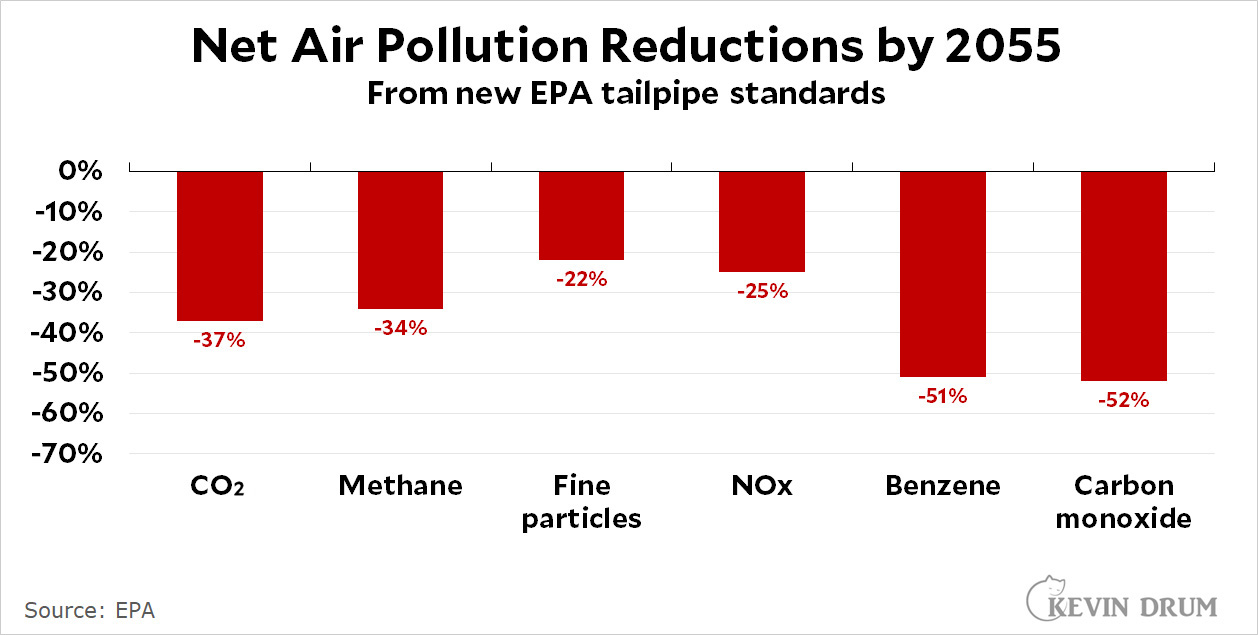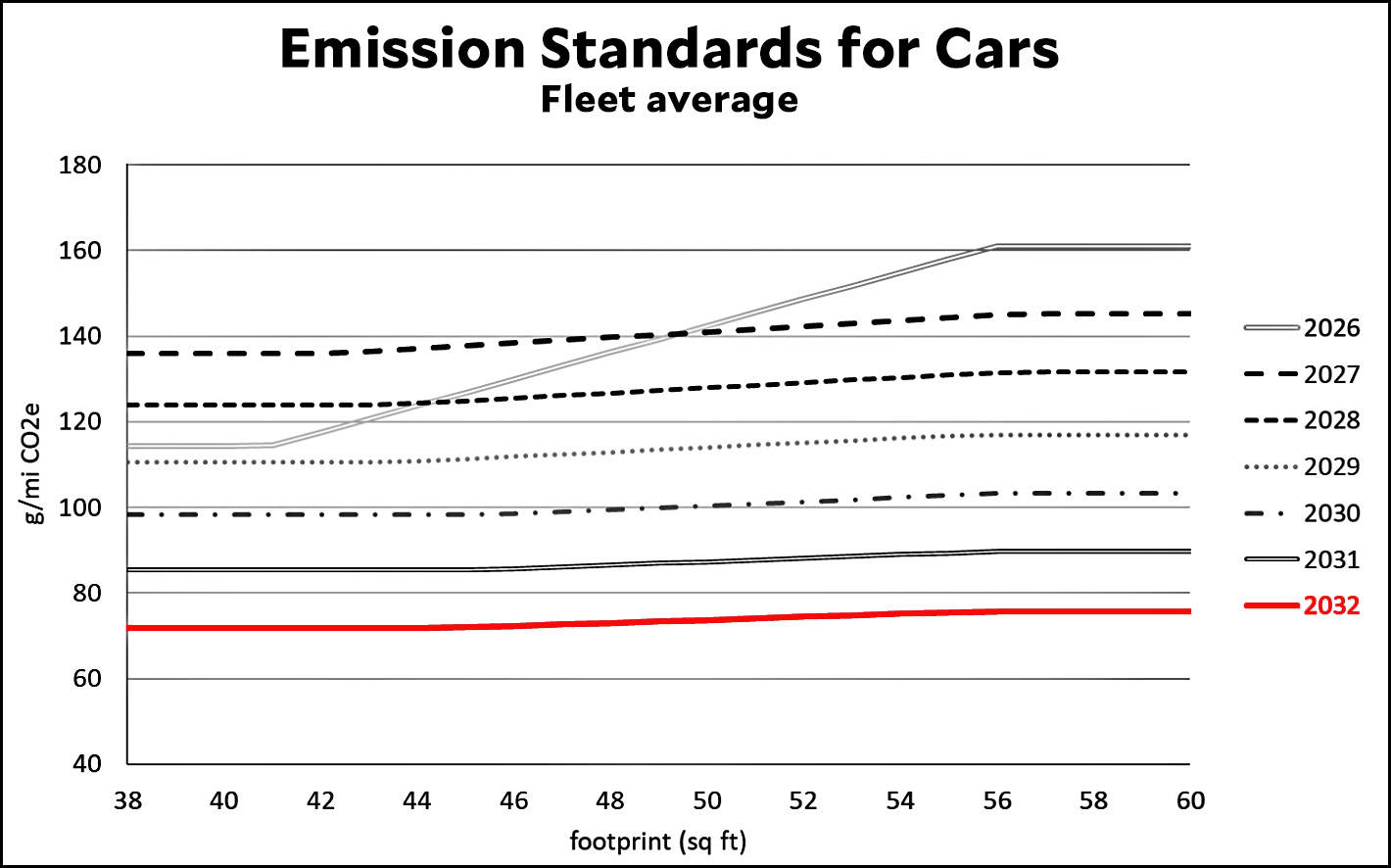The EPA announced new tailpipe emissions standards today. The headline impact is that the new standards will spur sales of electric vehicles, but they'll also cut air pollutants substantially:
 And here are the new rules for CO2 emissions between now and 2032:
And here are the new rules for CO2 emissions between now and 2032:
 This is all from the text of the final rule, which is 1,181 pages long if you're looking for some light afternoon reading.
This is all from the text of the final rule, which is 1,181 pages long if you're looking for some light afternoon reading.

This would be a wonderful thing for our planet.
Unfortunately, we're in the United States in the 2020s, so it may be too late.
"Cut emissions"
"Promote sales of EVs"
Sounds like the work of the devil...
2055 is, let me get out my abacus, 31 years from now.
Plenty of time for magic.
About time.
The Sunrise Movement will say that re-electing Biden/Harris is the most important thing in 3 ... 2 ...
Of course not.
And the ads are already showing up in Michigan.
https://www.ispot.tv/ad/6dfq/american-fuel-and-petrochemical-manufacturers-banning-cars
Joe Biden's gonna take my truck pipes AND my guns!
If the industry isn't dragged into doing it, the Chinese will.
Sounds like the tyranny of the administrative state. Once the Chevron doctrine is overturned we can do away with this pesky interference in free enterprise.
Either that or it is a "major question" that SCOTUS can answer with a wisely pondered and well reasoned "nope."
My 7 year old Prius Prime already meets the 2032 requirement if you include the impact of pluggin, the car requirement is ~ 65 mpg. I could do that on gas alone - on a level road at 55 mph. But this is an area where I think the regulatory approach is far inferior to an escalating carbon tax. If you set the tax to ~ $100/metric ton now and inflate it at inflation + 5%, you will provide a strong price incentive to maximize efficiency and provide a reasonable basis for investiment planning. Regulation is reasonable when our individual choices have externalities, but in general, the market is probably a more efficient means of distributing investment to deal with the costs.
Wowza. 2055. When ICEs should be completely obsolete and no longer sold. But in the U.S., you will still be able sell cars that still spew more than half the CO2 of today's cars.
I'm having a hard time figuring out how 37% by 2055 squares with 37% for small cars, and 50% for large cars, by 2032.